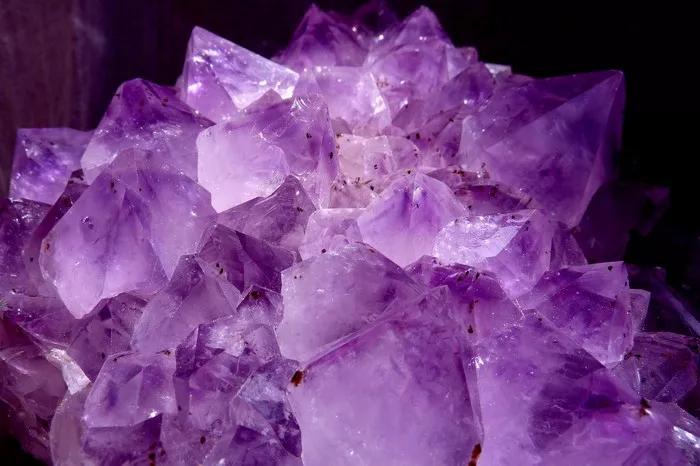Amethyst, a mesmerizing gemstone of purple hue, has captivated humanity for centuries with its allure and mystique. Beyond its aesthetic appeal, amethyst holds a significant place in various cultures, including references in ancient texts like the Bible. In this exploration, we delve into the biblical references to amethyst, unraveling its symbolism, historical context, and spiritual significance.
Origins and Historical Context
To understand the biblical references to amethyst, it’s crucial to grasp its historical and cultural context. The Bible, a collection of sacred texts revered by Christians, Jews, and many others, contains numerous mentions of precious stones, including amethyst.
The Hebrew Bible, also known as the Tanakh, comprises the Old Testament for Christians. In the Old Testament, amethyst is associated with the breastplate of the High Priest and finds mention in the Book of Exodus. The breastplate, adorned with twelve precious stones, symbolized the twelve tribes of Israel. Amethyst is believed to represent one of these tribes, though interpretations vary.
In the New Testament, the Bible includes the Book of Revelation, which presents vivid imagery and symbolism. Here, amethyst appears as one of the stones adorning the foundation of the New Jerusalem, a celestial city described in apocalyptic visions.
Symbolism and Meaning
Throughout history, amethyst has been imbued with symbolism and meaning, often associated with spirituality, protection, and purification. In the biblical context, these themes resonate deeply, reflecting the moral and spiritual teachings found in the scriptures.
Purity and Holiness: Amethyst’s vibrant purple color has long been linked to notions of purity and holiness. In religious symbolism, purple signifies royalty and divine connection. The purity of amethyst’s hue aligns with the biblical emphasis on spiritual cleanliness and moral uprightness.
Divine Protection: The belief in amethyst’s protective qualities extends to biblical interpretations. In ancient times, the gemstone was thought to ward off evil and promote spiritual protection. This notion aligns with biblical teachings on God’s providence and safeguarding of believers from harm.
Spiritual Enlightenment: Amethyst is often associated with clarity of mind and spiritual enlightenment. In biblical contexts, this symbolism resonates with themes of wisdom, discernment, and spiritual awakening. The gemstone serves as a reminder of the pursuit of divine knowledge and understanding.
Transformation and Renewal: Another aspect of amethyst’s symbolism relates to transformation and renewal. Just as the gemstone is formed through geological processes over time, biblical narratives speak of personal transformation and renewal through faith and spiritual growth.
Biblical References to Amethyst
The Bible contains several notable references to amethyst, each offering insight into its significance within the biblical narrative.
Exodus 28:19 (Old Testament): In this passage, amethyst is listed among the twelve stones adorning the breastplate of the High Priest. Each stone represents one of the tribes of Israel, signifying unity and divine favor. The exact identification of amethyst in this context is subject to scholarly debate, as ancient gem classifications may differ from modern ones.
Revelation 21:19-20 (New Testament): The Book of Revelation describes the foundation stones of the New Jerusalem, the heavenly city. Among these stones is amethyst, symbolizing the grandeur and purity of the celestial realm. The imagery evokes themes of divine glory and eternal salvation.
Proverbs 31:10 (Old Testament): While not a direct mention of amethyst, this verse in Proverbs speaks of the worth of a virtuous woman, describing her value as “far above rubies.” The comparison suggests the rarity and preciousness of qualities like wisdom, integrity, and spiritual depth, attributes often associated with amethyst symbolism.
Interpretations and Allegorical Meaning
The biblical references to amethyst have sparked various interpretations and allegorical meanings, reflecting the diverse theological perspectives within religious traditions.
Tribal Symbolism: In the context of the breastplate of the High Priest, interpretations of amethyst’s significance often revolve around its association with a specific tribe of Israel. Some scholars identify amethyst with the tribe of Levi, emphasizing themes of priesthood, devotion, and spiritual leadership.
Eschatological Symbolism: The depiction of amethyst in the foundation stones of the New Jerusalem carries eschatological significance, pointing to the fulfillment of divine promises and the establishment of God’s kingdom. The gemstone symbolizes the eternal beauty and perfection of the heavenly realm, where believers will dwell in communion with God.
Personal Virtue and Character: Beyond its collective symbolism, amethyst can also be interpreted allegorically in terms of personal virtue and character. Just as the gemstone is prized for its rarity and beauty, individuals are encouraged to cultivate inner qualities of integrity, wisdom, and spiritual depth, reflecting the divine image within.
Conclusion
Amethyst’s presence in the biblical narrative serves as a testament to its enduring significance and timeless appeal. From its association with the breastplate of the High Priest to its depiction in the celestial city of the New Jerusalem, amethyst carries layers of symbolism and meaning that resonate with spiritual seekers across generations.
Whether viewed as a symbol of purity, protection, enlightenment, or transformation, amethyst continues to inspire contemplation and reverence in both religious and secular contexts. Its rich history and deep-rooted symbolism invite us to explore the intersection of faith, spirituality, and the natural world, prompting reflection on the divine mysteries that lie beyond human comprehension.


